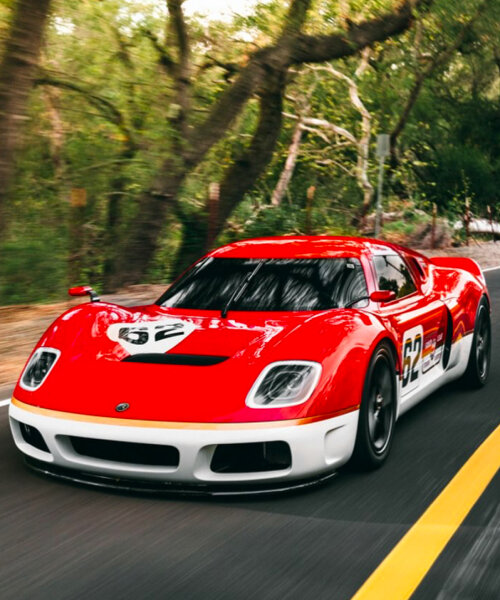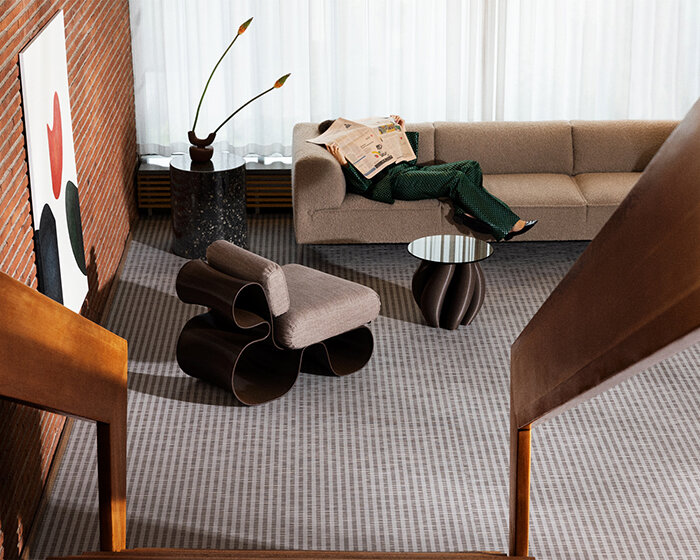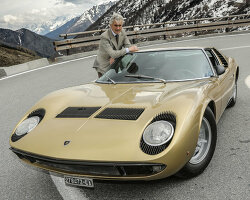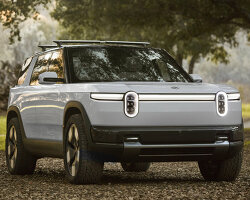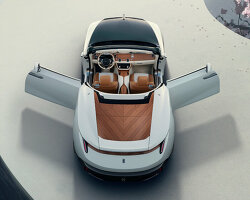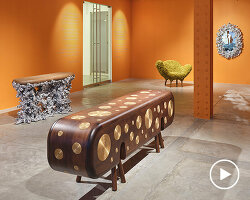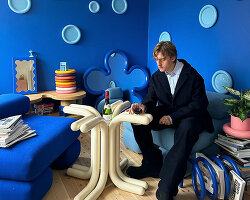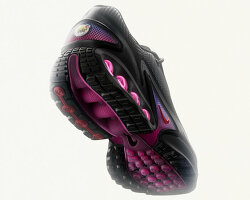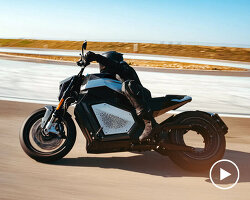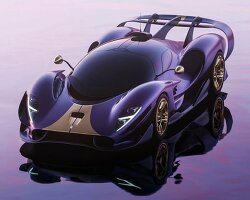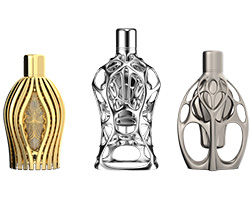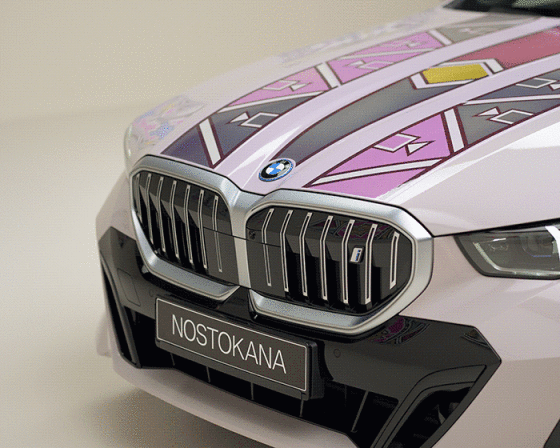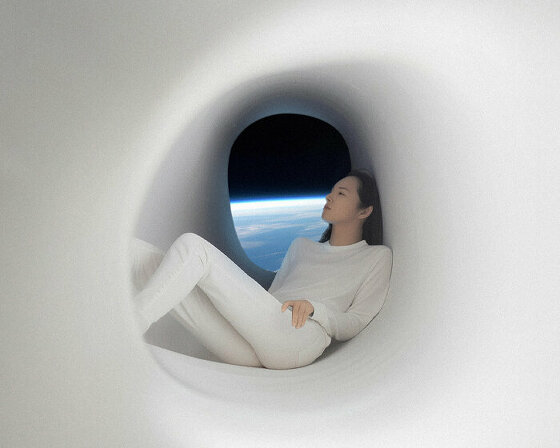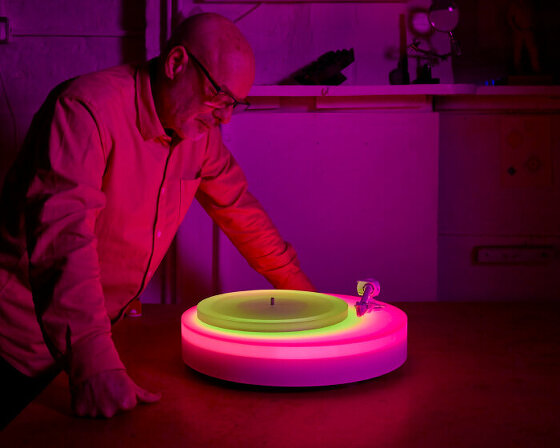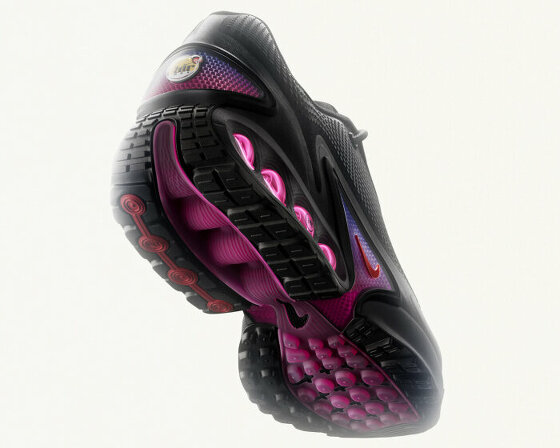Radford motors and jenson button develop Lotus 62-2 car
F1 World Champion Jenson Button revives the 1969 Lotus Type 62 Race Car, but as he tells designboom in our interview, that wasn’t the only part of his career that he brought back to life. He also resurrected Radford Motors with his co-founders Ant Anstead and Roger Behle, and the three of them pledged that the brand would craft bespoke vehicles tailored to each driver. The modernized Type 62-2 testifies to their mandate and comes in three forms: a road-legal version, a track-only variant, and a Race Edition, as seen in the most recent Pikes Peak Edition of the Lotus Type 62-2 car, which debuted at The Broadmoor Pikes Peak International Hill Climb by Gran Turismo.
Time, patience, skills, and know-how made these creations possible. As Jenson Button reveals to designboom, Radford Motors circled back to the full history of Lotus cars, including the original Esprit car of James Bond, before settling with the final design. ‘Research led us to a pencil drawing in 1963 by Ron Hickman, the lead designer at Lotus at the time. His drawing was the unsuccessful Lotus pitch to Ford for the GT40. As we looked deeper, we found that in 1969, Chapman created just two race versions using parts of the Europa project. This car was called the Type 62. While one car was living in Japan, the other was within 30 minutes of Jenson’s home in LA. With our hands on an Original Lotus Type 62 from 1969, we set about a complex design exercise reimagining the car built over 50 years ago for the modern-day car collector,’ Jenson Button shares with designboom.
Reading on our interview with Jenson Button, the F1 World Champion racer, who will return to racing full-time in 2024, dives into the thorough design process to develop and produce the modernized road, track, and event-only Lotus Type 62-2. The technological and visual elements of each version are worth noting, such as 3D printing technology and the use of an all-carbon monocoque. Jenson also discusses how the revival of Radford Motors occurred and the upcoming projects the brand has in store for its fans, including the entrance of the Type 62-2 roadster drawn from the rare run of GT40 roadsters.
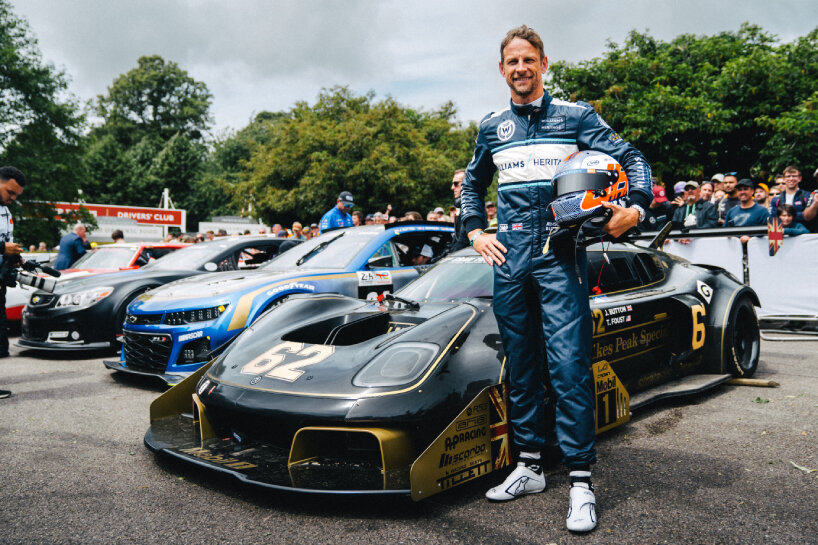
Jenson Button besides the Track Edition Lotus Type 62-2 | images courtesy of Radford Motors
Interview with F1 world champion jenson button
Designboom (DB): With your background as an F1 World Champion, was venturing into the world of automotive building a natural move for you?
Jenson Button (JB): Most definitely. I had a long, fantastic F1 career, and it was great to get freedom from all that. But eventually, I needed a new challenge to sink my teeth into. Joining the revival of Radford Motors felt like the perfect opportunity because I loved the idea of being involved in the design and development of a new car.
Bringing back Radford Motors alongside Ant Anstead and Roger Behle, was perfect. The world is now accepting this coach-built era where people are now willing to pay for higher quality and bespoke touch. A friend of the company spent a few years protecting the Radford brand, researching it, and making sure that the IP was lined up. As we see it, the three of us are now the custodians of the Radford brand for this period and carry the baton for a legacy brand.
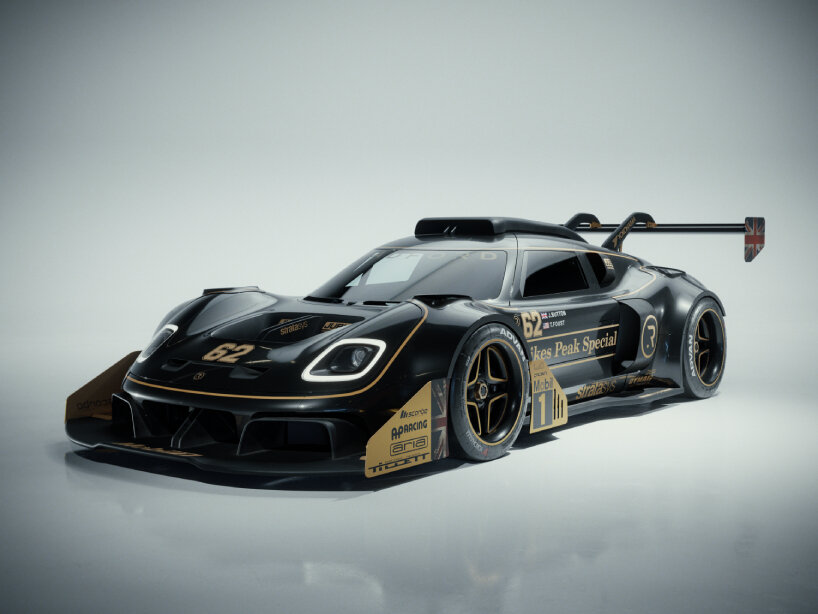
Type 62-2 Track Edition Pikes Peak Edition (more about the design in our interview with Jenson Button)
DB: Can you share insights into the role you occupy? How have your experiences in racing shaped the design philosophy of the company?
JB: As co-owner of Radford Motors, I actively participate in the design, development, and handling of the vehicles, contributing my expertise and insights from my past experiences in F1. As a track-based driver, I focused on informing driving dynamics, handling, driver ergonomics, and almost every component I learned through my own experiences in racing. I understand the importance of having the steering, the gear lever, the pedals, the seat position, and the eye line proportionally perfect. In my opinion, there are only a few cars in this category that capture that correctly out of the gate.
Sitting in one of our cars should be like putting on a glove. It fits perfectly and there’s a space for every finger. The wheel’s in the right place, the pedal is in the right place, and the gear stick is in the right place. Looking through the middle of the windscreen and the greenhouse is exactly right. Ultimately, each of our cars is a piloted machine. One of the world’s best handling machines. We put a lot of effort into how the car felt from a driving position. I loved the idea of these swooping wings in the Pikes Peak edition that were very low risk so that when the driver looks through the windscreen, they can see the wings. That’s all deliberate.
A lot of effort has gone into making sure that the driver’s position is exactly right. Steering height and access to the gearshift are key. Shifting efficiently is important, so gear stick position is key for us. The difference between the gear stick being in the wrong place and the right place is the difference between first and last on a racetrack. Ultimately, we want our clients to experience what it’s like to drive a real race car.
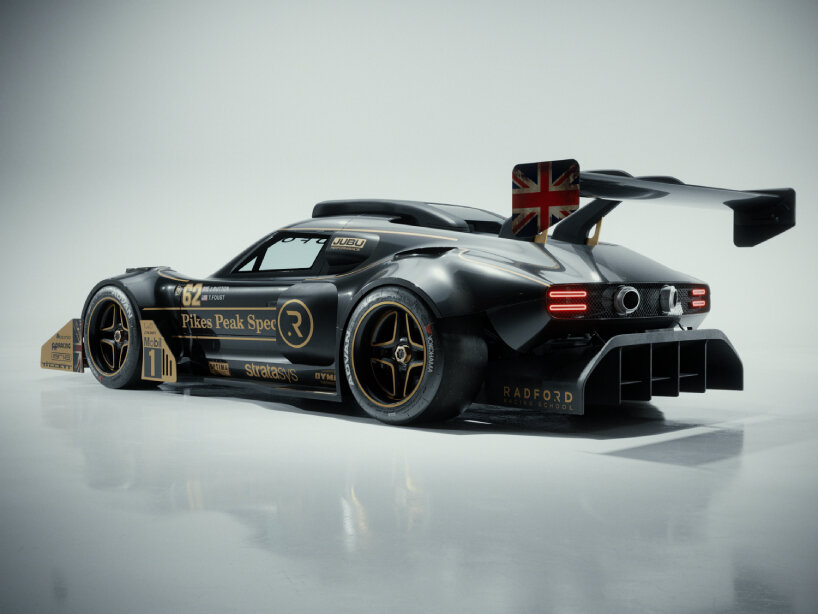
as Jenson Button reveals to designboom in our interview, Radford Motors circled back to the full history of Lotus cars
DB: The Type 62-2 is offered in three variants: a Track Edition, Track Edition with Race Edition, and a road-legal ‘road car’ version, which are fully customizable (except for Gold Leaf and John Player Special which have exterior standards). Could you highlight the notable design and technical differences between them?
JB: Radford offers our Type 62-2 in three forms. A road car, Track car and a Race Edition car (like our Pikes Peak addition). The road car is the genesis of this model. The road car established the design DNA in terms of style, shape and proportion. Under the skin, the vehicle is a highly tuned supercar leaning into our F1 partners and engineers and Colin Chapman’s ethos of simplify and add lightness. Our road car is one of the lightest supercars on the planet and offers an exhilarating driving experience that we believe has been lost in recent years. As features seem to be added by many car manufacturers, Radford removes. Supercars should not have cup holders.
Our Track car builds on what the road car has started refining and optimizing every single component. The all-carbon monocoque chassis reduces the weight even further as well as giving the car increased torsional stiffness. The car utilizes a range of additional performance parts and the car receives an aggressive design overhaul with the additional aero package including front, side and rear diffusers and a rear wing for increased aerodynamic performance. We add driver aids like power steering, traction control and ABS. A suspension package gives the car a wider stance and an FIA package that includes a full roll cage offering the driver additional safety reassurance.
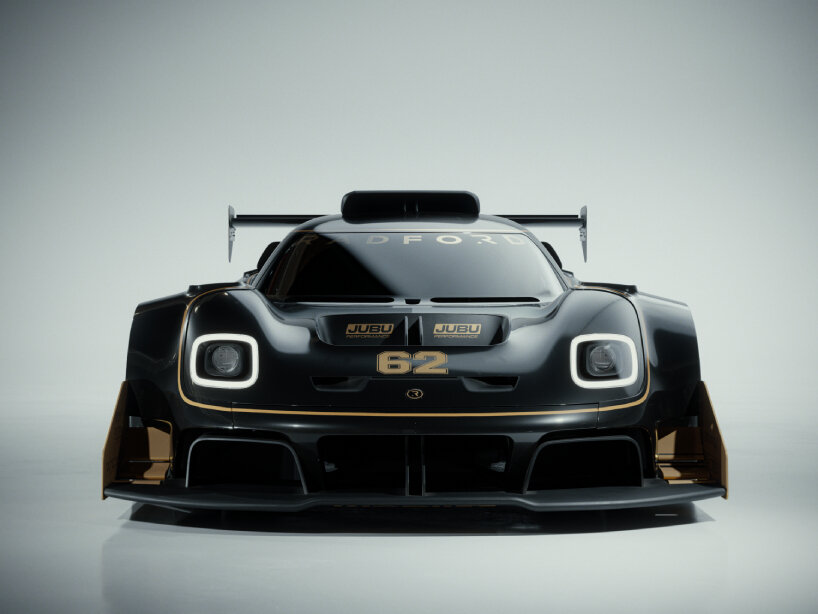
front view of the Type 62-2 Track Edition
As a coachbuilder, Radford revels in creating one-off cars, each bespoke to the client’s wishes in terms of build and performance. In 2023 we did so with our Pikes Peak Special which was an example of our Type 62-2 track version. A single-seater weapon born to tame the mountain. This car received an additional cooling package to combat the overheating risks at altitude as well as F1 engineered aero to keep the car planted. Tiptronic controls at the steering wheel and an increased turning circle to tackle the bends and curves of Pikes Peak all combined to give Radford not only a class win but setting a new class record on our debut. We have several clients that seek a one-off car for a one-off event or race. This is part of Radford super power. We offer experiences with unprecedented access.
As part of Radford’s ambitious growth plans we further acquired two iconic brands to complement our work. Radford is a proud custodian of the Gold Leaf brand, the first ever non-automotive race livery in history that has adorned some of the most important race moments of the past and the jewel in our crown the iconic JPS livery. The black and gold has been seen on world championship-winning F1 cars at the hands of Andretti and Fitipaldi with the last JPS wheel being turned in anger at the Hands of Ayrton Senna in the 1986 F1 season. Our Pikes Peak winning car wore the black and gold in 2023 bringing home a trophy to the Radford trophy cabinet. We offer just 12 cars in each race livery with fixed specs, creating a collectible and appreciating automotive asset for the most discerning car collector.
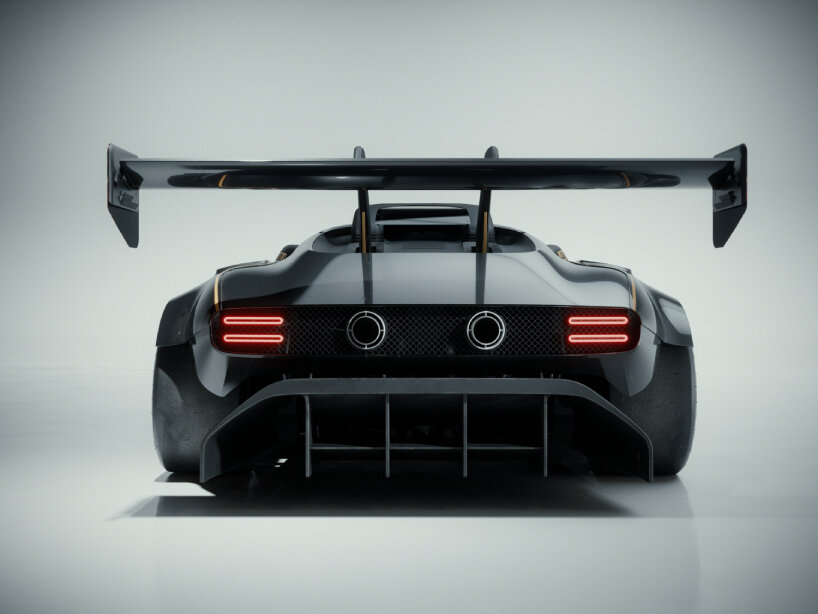
Jenson Button tells designboom in our interview that the Track car builds on what the road car has started
DB: Starting with the road-legal Type 62-2, why did you draw its design cues from the Lotus 62 instead of creating a car from scratch? Were any recognizable features from the Lotus 62 retained?
JB: At the start of this project we revisited the full history of Lotus cars seeking inspiration, with an original lean towards the Esprit as a famous car of James Bond. Research led us to a pencil drawing in 1963 by Ron Hickman, the lead designer at Lotus at the time. His drawing was the unsuccessful Lotus pitch to Ford for the GT40. Ford instead took another path and that included Radford.
As well as working on the original GT40 prototype, Radford went on to build every road-going GT40 interior for Ford. As we started to look further into the Europa, it leaned into the modern idea of placing the engine to the rear of the car for increased performance. As we looked deeper, we found that in 1969 Chapman created just two race versions using parts of the Europa project. This car was called the Type 62. While one car was living in Japan the other was within 30 minutes of Jenson’s home in LA, aligning the stars at that moment we saw her.
With our hands on an Original Lotus Type 62 from 1969 we set about a complex design exercise reimagining the car built over 50 years ago for the modern-day car collector. When the two cars are side by side the genesis of the original car is obvious. It takes a huge amount of courage to be restrained in design, and that is something our Typo 62-2 excels in. In a world of excess, the car is a thoroughly modern supercar yet retains an obvious nod to its heritage, I believe Hickman and Chapman would be beaming with pride.
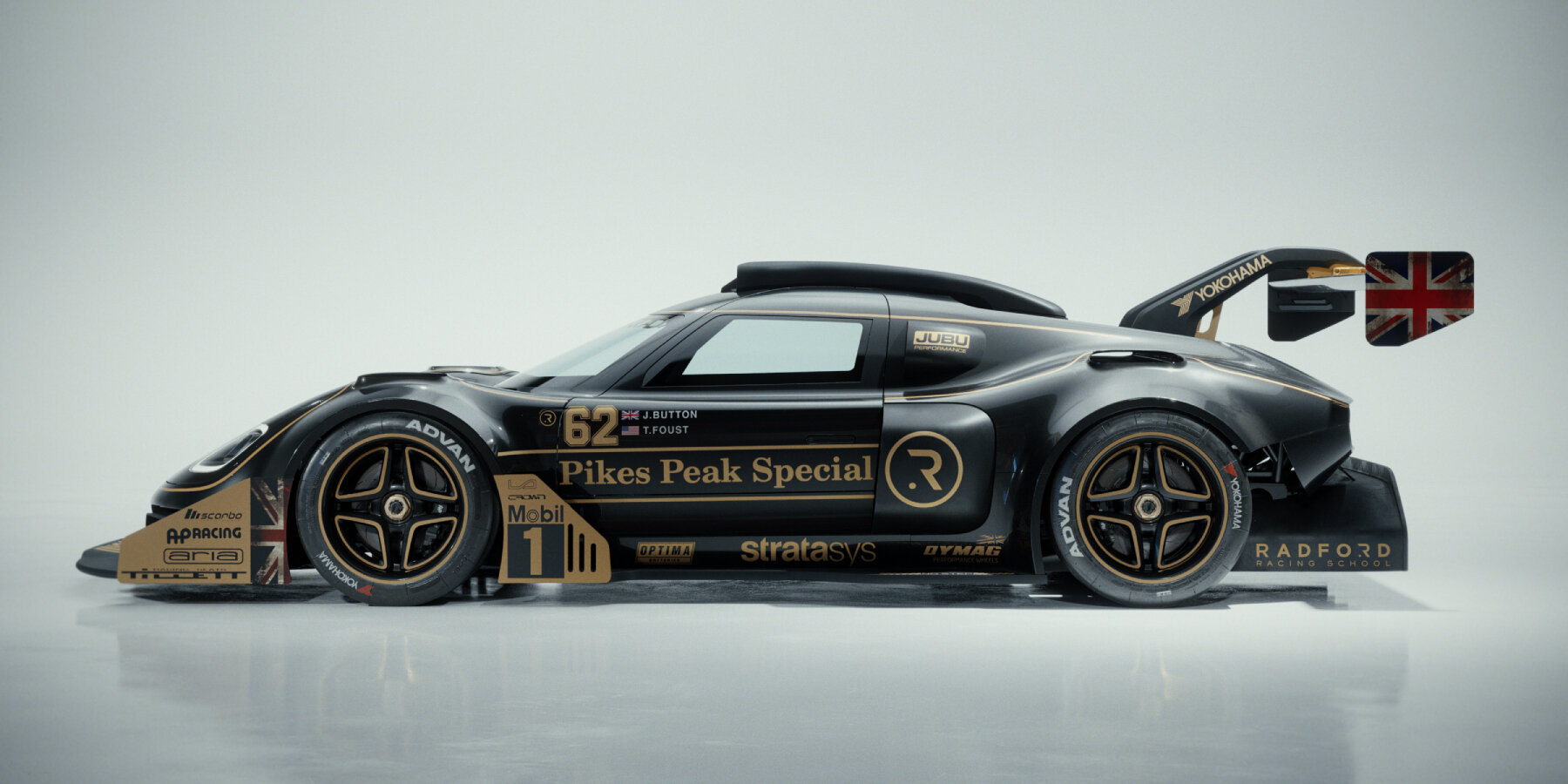
Radford Motors and Jenson Button modernizes Lotus 62 vehicle
DB: What technological and visual features of the road-legal Type 62-2 should we pay attention to?
JB: At Radford Motors, we deliberately engineer our cars to be the opposite of what’s currently out there, because our company believes that to a certain extent, the term supercar has been lost. At Radford Motors, we feel a supercar shouldn’t have electric windows, plush seats, cup holders, and all this nonsense. What’s the point? Our clients tend to be interested in experiencing the essence of driving. They want the basics at a very high level. There’s functionality and rawness to a Radford where we follow a strict DNA that creates a lightness in all things.
It’s no coincidence at the end of the first Radford Motors build that we ended up with the lightest supercar available on the market today. Interestingly, that wasn’t a target of ours while building. It is a byproduct of the Radford Motors designers and engineers doing things the way they were done in the past. Our new cars aren’t trying too hard. Our overall design retains class, presumes patience, and is humble. We took a blank canvas and designed a striking car.
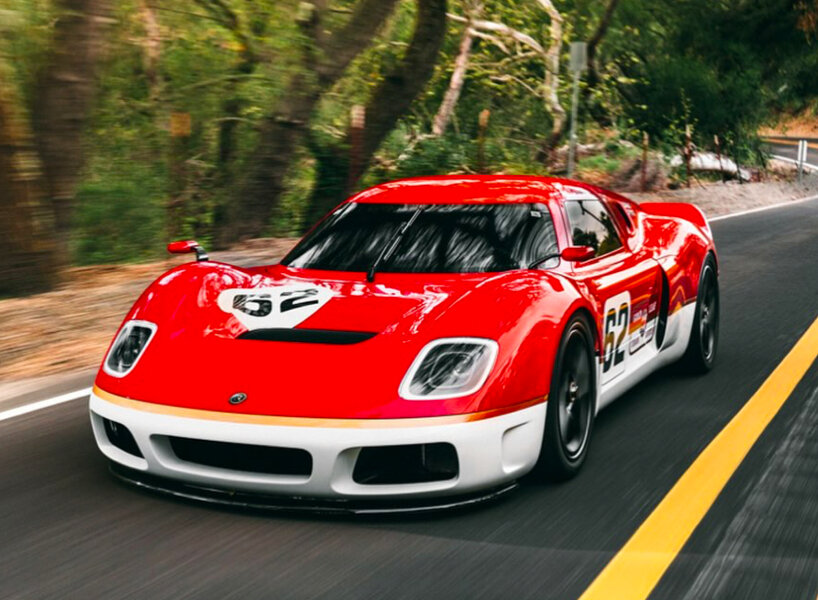
Type 62-2 car Gold Leaf Edition with design dive in our interview with Jenson Button
While a lot of supercar companies have leaned into the futuristic and actively adding things, Radford Motors is committed to deleting things. One can see that historically in classic car designs, the creators have a design ethos that less is more. These classic cars also feature more curvaceous designs as well. When contemplating Radford Motors, one recalls the glorious Le Mans cars of the fifties, sixties, and seventies.
There’s a femininity in that era of design to these incredible race cars that Radford Motors is bringing back. In our opinion, that’s what a lot of modern supercars are missing these days. For the Radford Motors road-legal car, we were thinking about how we could relate the glorious heritage of classic Le Mans racing cars to today’s market.
Radford Motors could go and create anything that our company wanted. We deliberately opted to create a stately car that in a way almost goes unnoticed. There is an easy, effortlessness there. And when people see a coach-built Radford Motors car driving down the road, we want them to wonder if they are seeing a classic car or a new car. Our design honors both worlds.
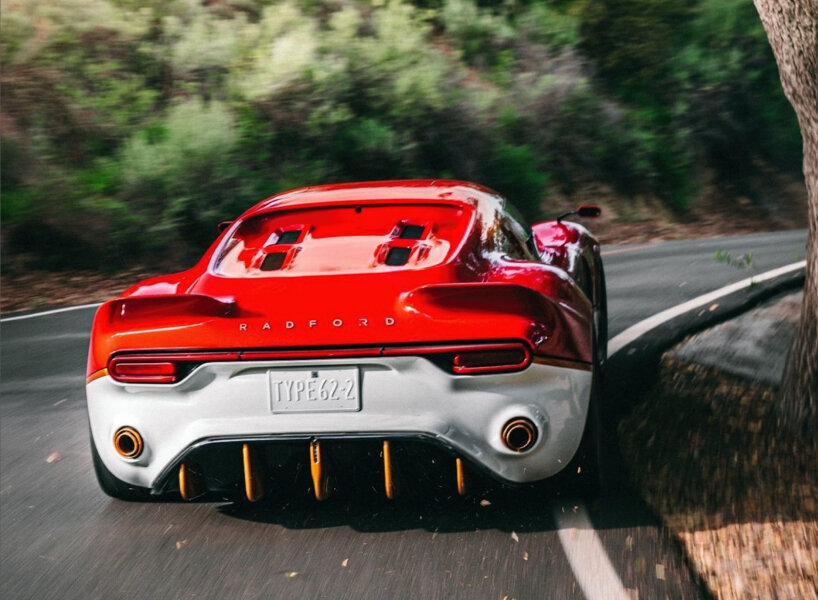
Radford Motors insignia behind the Type 62-2 Gold Leaf Edition
DB: Moving to the track edition of the Type 62-2, can you explain why it was built from the ground up around an all-carbon monocoque and utilized 3D printing technology for the 70 additional car parts?
JB: The decision to build the Radford Motors Pikes Peak edition on an all-carbon monocoque stems from the material’s exceptional strength-to-weight ratio. Carbon fiber is known for being incredibly lightweight yet sturdy, making it an ideal choice for high-performance vehicles like the Pikes Peak edition.
Now considering that the Pikes Peak deadline was only one hundred days, we knew that was an impossible deadline. Many major OEMs struggle to make that deadline. Without a 3D print partnership, Radford Motors wouldn’t have been able to make the car in that timeframe.
There are almost one hundred 3D-printed parts on that Track Edition Pikes Peak car. And, we also used 3D-printed parts for visualization and tooling. For example, for our four wings, our company wanted a wider stance to plant the car on the road in competition. Radford Motors engineers also wanted to create a chimney on the top of the fenders that would allow air to escape and help downforce.
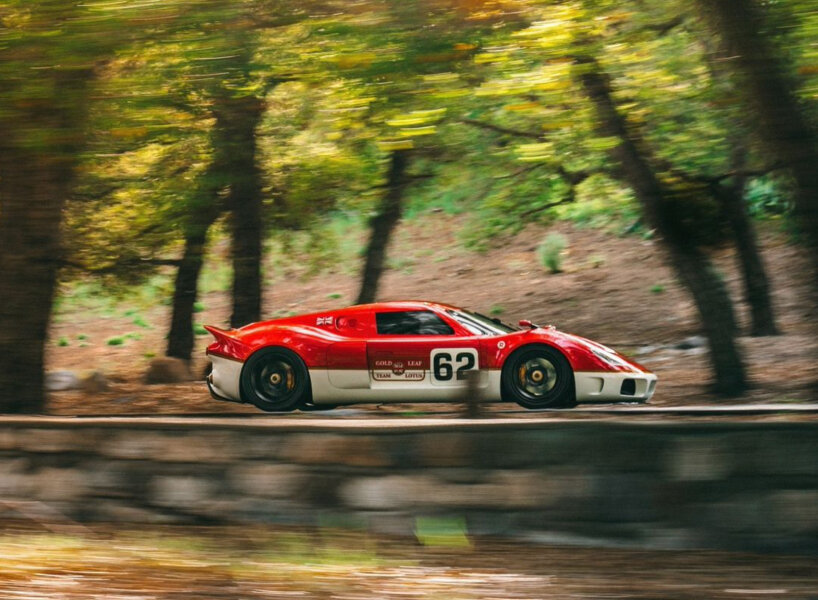
in our interview, Jenson Button shares that Radford Motors is bringing back the femininity design of the previous car eras
So, Radford Motors designed these four wider wings, but 3D printed them first, then applied them to our clay model to check that they not only worked functionally but looked good visually. The 3D part that worked best goes to tooling, and the rest goes into the bin. In terms of parts that stay and remain on the Radford Motors Track Edition car that utilize 3D printing, there are about a hundred. That whole roof scoop on the top, that air vent that puts the majority of air into the engine is a completely 3D-printed part.
The cool thing about our partner, Stratasys is that they can employ multiple manufacturing sources to do a wide array of 3D print work simultaneously. At one point during the development of the Pikes Peak-winning Track Edition car, Radford was having parts printed in Wisconsin, Washington, a part in Chicago, and there was even a part being printed in Austria. On top of all that, Radford Motors also had two machines of our own going too. At one point, simultaneously, we had six or seven machines running parts for the Pikes Peak car at the same time. Another advantage is that the 3D machines work overnight. To give an idea on timing, a big part like a fender took us about a 22-23 hour print cycle.
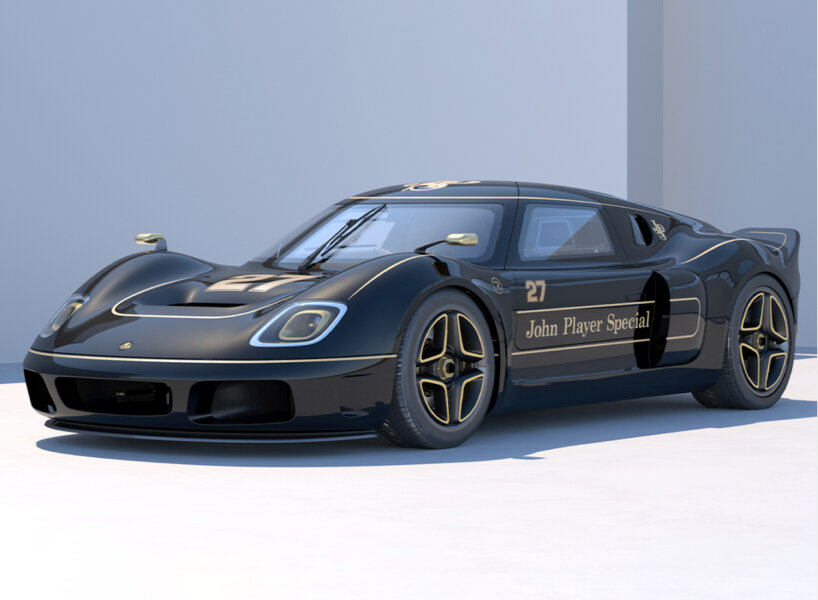
Type 62-2 car John Player Edition (more about the design in our Jenson Button interview)
DB: What were the technical and design challenges that the team encountered during the production of the Type 62-2, and how were they overcome?
JB: Radford Motors started looking at the challenges that Pikes Peak presented us. One of the big issues is cooling. We knew that we needed to add radiators. The Pikes Peak-winning Track Edition car has five radiators. Another big priority for engineering was maximizing the amount of frontal air entering the car. Our Pikes Peak car has three big front vents, two big side vents, and one big roof vent.
These vents are purely functional. Yes, Radford Motors made them look attractive and flow within the lines of our body. But function first, form second. Historically, Pikes Peak has a challenge with aero. So, every Pikes Peak car has a rear wing. And so, how does Radford Motors make our rear wing? The Track Edition car’s wing supports come from out of our existing engine cover outlook mounts. Our engineers worked on the design of our existing road car. So, the rear wing looks aggressive, but it is actually functional.
And that’s the same for the front and rear splitter. The Radford Motors Track Edition car’s rear splitter is probably the most aggressive looking. And that’s purely to keep the car on the floor. The front splitter and side splitter are shaped and function to follow the curve of our car. Yet, if one looks at our Pikes Peak-winning car from above, it still retains the silhouette of femininity amidst a very aggressive stance and energy.
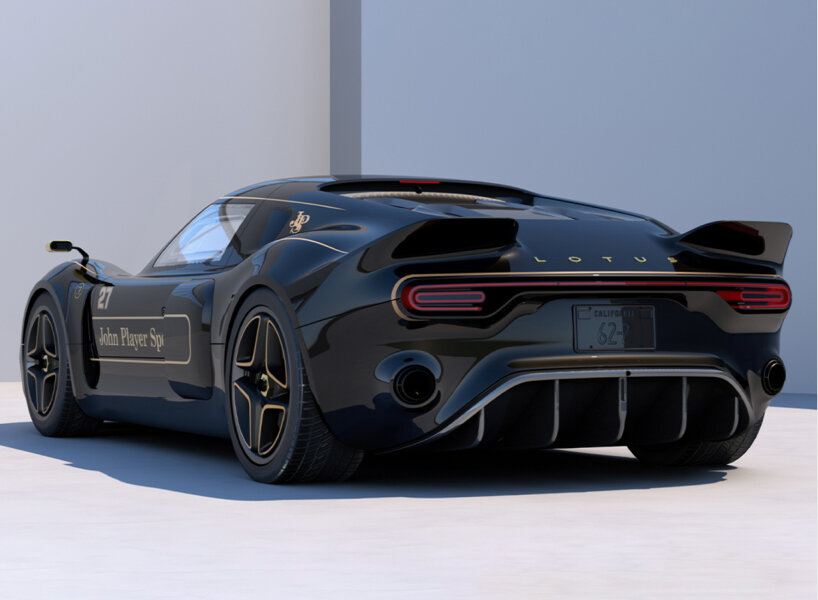
Jenson Button tells designboom in our interview that Radford Motors used 3D printing technology for the cars
DB: Finally, what future vehicles and projects does Radford Motors have in store?
JB: While Radford has already kicked off a second secret car with another OEM, in the short term 2024 is an exciting year for Radford. Not only do we bring our all carbon monocoque into the road car offering with a whole range of new weight-saving parts and a full engineering review bringing our car to what we call “Generation 3”. We have also designed, developed and built a Type 62-2 roadster drawing historical design cues from the rare run of GT40 roadsters. Look closer at the Ron Hickman drawing and the keen eye will note the roof was designed to be off.
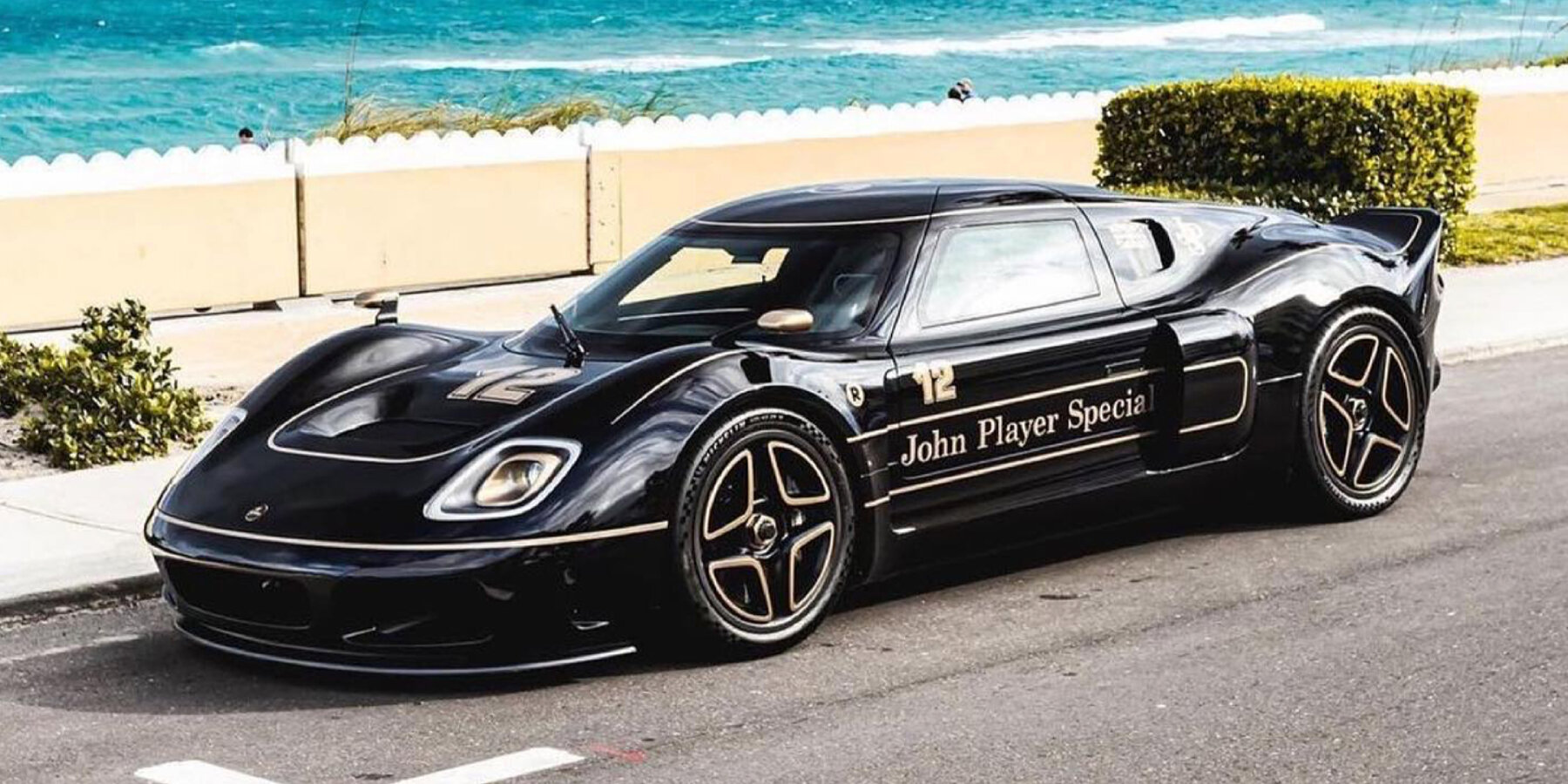
a Type 62-2 roadster is on its way as Jenson Button shares with us in our interview
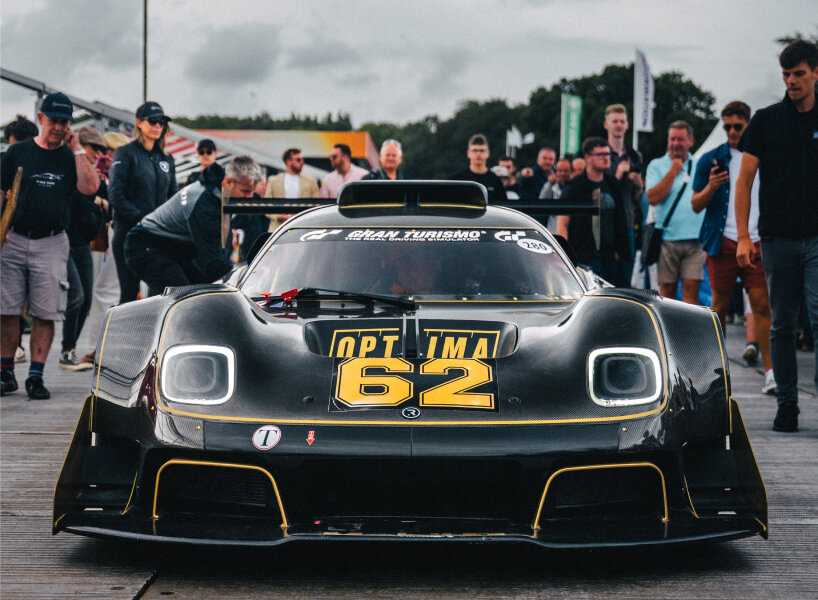
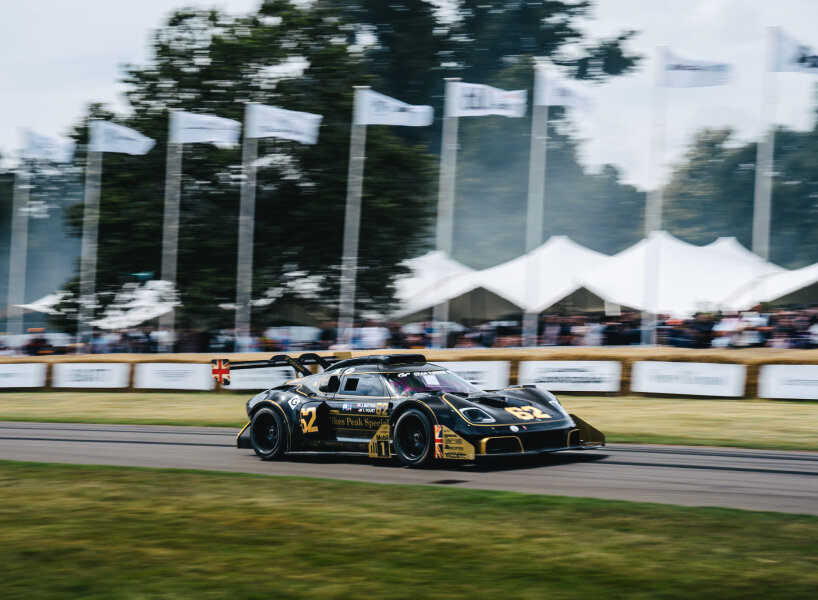
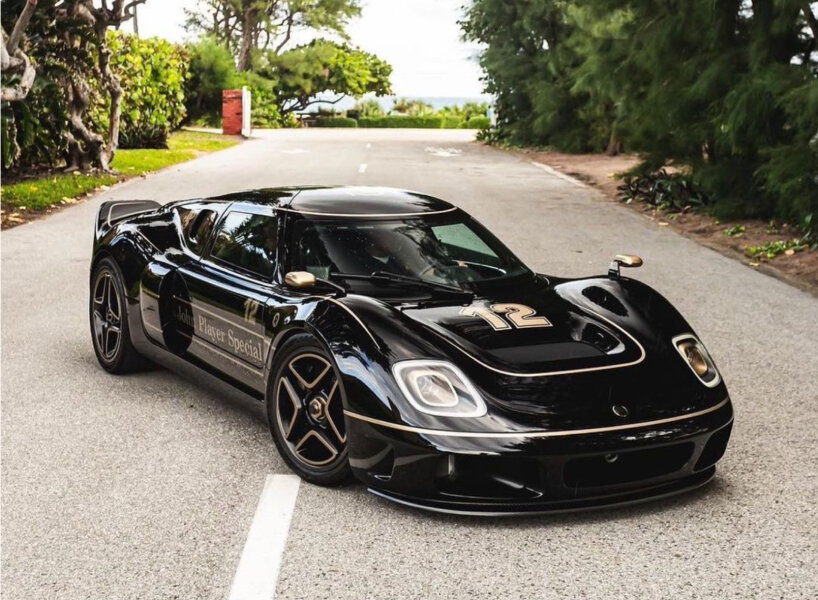
project info:
vehicle: Lotus 62-2
brand: Radford Motors
founders: Jenson Button, Ant Anstead, Roger Behle
CAR DESIGN (788)
DESIGN INTERVIEWS (40)
FORMULA ONE (29)
PRODUCT LIBRARY
a diverse digital database that acts as a valuable guide in gaining insight and information about a product directly from the manufacturer, and serves as a rich reference point in developing a project or scheme.
